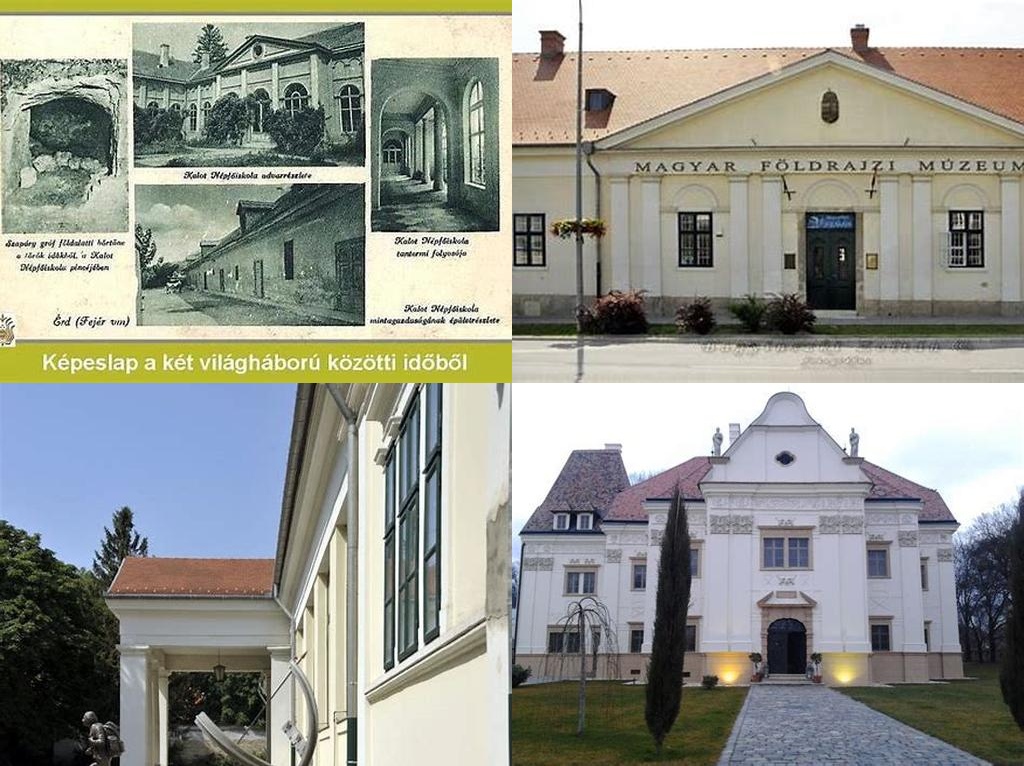
Sina-kastély stands somewhat quietly in the city of Érd, echoing both the dreams and dramas of bygone centuries. If you wander through its tranquil grounds today, you might catch glimpses of its rich past through the thick walls, battered murals, and generous parkland. This castle isn’t the kind of splashy, massively restored palace you might find sprinkled around Hungary—no, Sina-kastély feels more like something left after the curtain-call of an era. In a way, that’s exactly what it is—a monument to families, change, and, oddly enough, high finance.
The story kicks off strong in the early 19th century. It was the Greek-born banker Gheorghe Sina (often spelled Geo Sina), prominent among the wealthiest men in the Habsburg Empire, who left a significant mark here. The Sina family established their presence in Hungary with both ambition and taste. The castle, which was actually more of an elegant mansion at its origins, was erected in about 1840 (give or take a year, as records from the era are understandably fuzzy). Its creator, Gheorghe’s son Simon Sina, intended the building to express both the families’ growing status and their classical tastes, which drew inspiration from Vienna as much as from the traditions of their homeland.
Architecturally, the castle is a blend of the neoclassical with some late-baroque elements. It rests in the midst of a sprawling English-style park that once buzzed with society gatherings, horse-drawn carriages, and the idle games of children who grew up to be envied for their charmed circumstances. The Sina family invested not just their fortune but their vision into Érd, leaving behind not only this striking home but also supporting cultural and economic growth in the region. There’s real charm in the faded murals that still peek through in some of the halls. Though many pieces were stripped or hidden away during the turbulent 20th century, take a closer look at the fragments—the scenes of romantic, Arcadian landscapes and mythological figures linger in corners, remnants of more decorative times.
As for what happened next—well, Hungary’s history did not favor the quiet life of castles for very long. After World War I and the subsequent shifts in land ownership, the Sina-kastély changed hands multiple times. During the volatile 20th century, the building morphs almost symbolically to match the times: after being a private residence, it housed a variety of public institutions under various regimes. There was a period when it served as a school, then a hospital, even, at points, a command center for different authorities. The glamour faded, but the walls remained—a living timeline of Central European change and resilience.
What can you expect if you pay a visit today? You might be surprised at the atmosphere. The castle stands inside a shade-filled park that provides a kind of natural hush from the bustle of modern Érd. Some restoration attempts have been made since the 1980s, but the process has been drawn out and, at times, controversial. Step inside (if accessible), and you’ll notice the raw charm of a site that holds onto its scars rather than hiding them. Some may see the cracks or fading details as flaws, but others—especially anyone with a taste for history’s rougher edges—find poetry in the authenticity. You’re literally walking through the same passages as aristocrats, doctors, teachers, and soldiers did, each of whom left a part of their days behind.
Surrounding the main building, the grounds are worth a quiet amble. Old-growth trees stretch over lawns where concerts and family picnics are occasionally staged. The area is popular with local walkers and history buffs who appreciate the solitude and the scenery together. There are traces of the castle’s former splendor—a few classical statues tucked into the greenery, pathways that suggest weekend strolls in tailcoats and silk dresses. Yet, unlike the grandest palaces, Sina-kastély retains an approachable feeling, almost as if it’s daring you to imagine its golden years.
What makes Sina-kastély in Érd unique is not just its architecture or even its brush with noble finance, but the way it has survived—battered, adapted, but not erased. The castle draws visitors who are keen to touch real history, not a polished version of it. Whether you’re a seasoned traveler, a lover of Hungarian history, or just after a bit of local color on a sunny day, the story-soaked halls and leafy park of Sina-kastély are well worth stepping into. There’s something singular about a castle that has endured not because it stood apart from the world, but because it followed its rhythms, and wore its experiences proudly.





